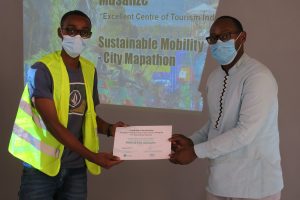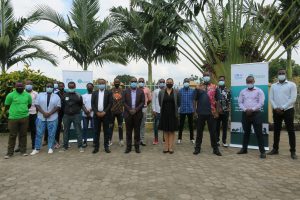
3rd June , Musanze Secondary City , Rwanda . GGGI Rwanda is currently implementing a project that is ongoing in three different countries. The United Nations Environment Programme is funding the “Strengthening, Prioritizing, and Investing in Non-Motorized Transport Infrastructure” project with UNDP in Zambia, WRI in Ethiopia, and GGGI in Rwanda.
As part of the activities, the project aims to:
1) enhance and strengthen the capacity of governments to prioritize and allocate resources to NMT infrastructure at the national level through the introduction of relevant policies,
2) support one selected city within the three countries to better design and implement city-level action plans for NMT investment (integrated with city-wide urban planning),
3) place a particular emphasis on vulnerable groups.
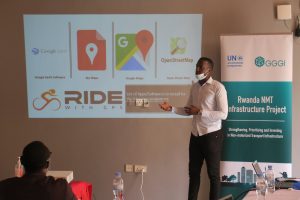
GGGI organized the mapathon as a way to engage youth in the urban planning and developing process. Musanze is one of the six secondary cities in Rwanda. Within the Vision Framework 2050 for Musanze City, targets include 80% of trips using either mass transit or NMT to alleviate congestion, reduce air pollution, and minimize greenhouse gas emissions from transport. In Rwanda, 13% of total greenhouse gas emissions are from transport. Increasing the walking share in cities has the potential to reduce greenhouse gas emissions by 6.9% at a cost of 17 USD per tCO2. Similarly, increasing the bicycle modal share from 1-10% decreases GHG emissions by 8.4% at a cost of 14 USD per tCO2. Encouraging the modal shift to walking and cycling are two of the most cost-effective measures to reduce GHG emissions from transport.
Transport and Sustainable Mobility Infographic

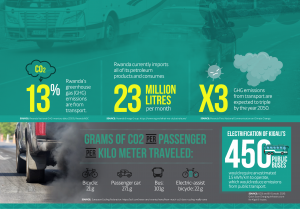

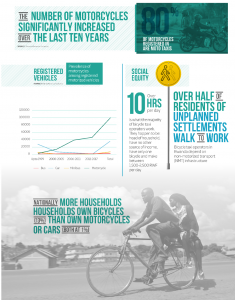
The event engaged 8 youth in learning mapping skills using different platforms to identify walking and cycling routes. During the first day of the training, participants used mapping tools such as Google Earth to identify NMT infrastructure. The second day of the training participants participated in a city tour around Musanze led by the Africa Rising Cycling Center (ARCC) and a site visit to verify the status and condition of the selected routes. The aim of the workshop was to provide participants with skills to contribute spatial data on NMT infrastructure and to share these data on multiple platforms that are open to the public. This sharing of data enables users, tourists, and commuters to access routes suitable for using active transport to facilitate and promote the shift to walking and cycling in the city. The data is also available for city planning and urban sustainable development planners to enable a multi-modal transport network throughout the city.
Non-motorized transport infrastructure is often funded by municipal budgets and is often overlooked in favor of road construction that favors the use of personal motorized vehicles. The result is a lock-in effect that discourages the use of green mobility while adding to congestions, air pollution, and the use of motor vehicles in urban centers. GGGI is implementing the project as part of the ongoing work on green cities, which prioritizes public transport, e-mobility, and non-motorized transport as a means to improving the quality of life in cities.
The event engaged national government stakeholders including the Ministry of Infrastructure (MININFRA) along with youth groups, cycling advocacy organizations, and the private sector to add capacity in the area of mapping skills for non-motorized transport. The Vice Mayor of Musanze provided welcoming remarks to the participants highlighting the vision of Musanze as a center for tourism, and will serve as a green, resilient, smart and walkable City. He added that the workshop marks a starting point for the City to promote NMT modes that are accessible, safe and enjoyable to the public. The workshop included presentations on greenway project ideas to construct a 21-kilometer cycling trail around Lake Ruhondo and a proposal for an inter-city cycling network.
Mr Janvier Twagirimana, Transport External Link & Donor Coordinator from MININFRA in his remarks shared the Strategies of the ministry to develop an integrated and sustainable multimodal transport system through, development of high-quality footpath with street lighting, improvement of pedestrian access ways and crosswalks, and development of bicycle parking sites.
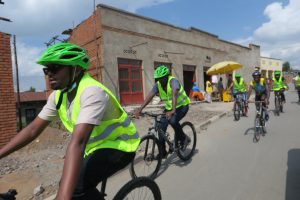
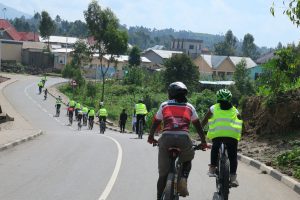
The project aims to enable data-driven, evidence-based city planning by providing detailed information on the status of the city’s non-motorized transport infrastructure including gaps, needs, and opportunities for expansion.
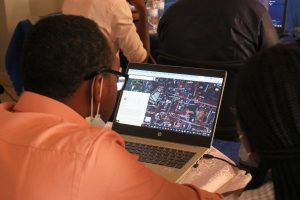
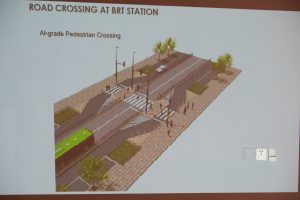
In closing of the workshop, the participants made presentations from the assigned groups of the selected mapping area and each group provided proposals for improvement of the cycling and walking infrastructure and some of those proposals include, providing NMT overheads(flyovers) on busy highways or at BRT stations for safety and convenience, accommodate other service providers along the trails like water kiosks, increase parking lots for bicycles in the urban area, maintain the trails for commuting and tourism purposes, add street lighting, improve and prioritize the existing trails to make it easy for District planners to plan for NMT without having to acquire new space on private land which requires expropriation that is more costly for the District which is the biggest challenge why NMT infrastructure is not integrated on newly constructed urban roads. District engineer in charge of transport was also urged to be involved in the design of the urban roads that are being developed by Rwanda Transport Development Agency to be able to integrate most of the ideas that were proposed from the workshop. District engineer in charge of transport was also urged to be involved in the design of the urban roads that are being developed by Rwanda Transport Development Agency to be able to integrate most of the ideas that were proposed from the workshop.
The Vice Mayor of Musanze in charge of Economic Development in his concluding remark, recommended the idea of allowing the participants to go on field and explore the condition of their selected routes, emphasizing that this is only the beginning as there is still a long way to go to engage different stakeholders and also requested GGGI to continue to be a connector between the District and organizations that can help support NMT initiatives for the different benefits that the groups had enumerated during the workshop, highlighting the criteria of social facilities that was used as a basis for most groups to do their mapping. He also mentioned that the District looks forward to continuing to support all the efforts and all partners to be able to achieve the objective of the project
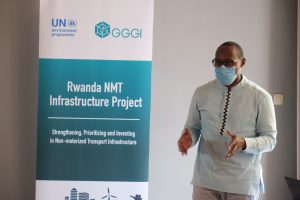
Vice Mayor of Musanze in charge of Economic Development , Mr Andrew Mpuhwe Rucyahana
Next steps for the project include, developing the final NMT Map for cycling and walking and share the draft to the participants for their final inputs or comments and engaging with the University of Rwanda-Huye Campus to organize a second workshop. Ultimately, the project will provide case studies from Rwanda on the return on investment of investing in NMT infrastructure as well as to identify potential sources of funding for large-scale, greenway initiatives, and projects such as the creation of car free zones to increase accessibility in cities throughout Rwanda.
